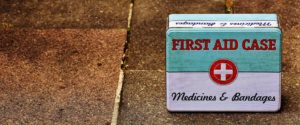Unfortunately, not all products we purchase or use are safe. Take a look at the statistics from the United States Consumer Product Safety Commission (CPSC), and you’ll find serious injuries stemming from products including:
- Inflatable amusement rides
- Home appliances
- Kitchen, dining and nursery products
- Children’s toys
- Sports and recreation equipment
In October 2018, the CPSC reported there were 542 reported fatalities involving tip-over incidents with televisions, furniture and appliances from 2000 to 2017. From 2015 to 2017, there was an estimated annual average of 28,300 emergency department-treated injuries. IKEA is one of the major retailers whose products caused child deaths, with furniture tipping over and fatally impacting toddlers and children.
You should never pay money to get products that seriously harm or kill you or your loved ones. Defective products, including malfunctioning airbags and exploding smartphones, pose serious dangers that can result in life-long injuries or even loss of life. If you’ve been a victim of a defective product, you should contact a Phoenix product liability attorney to learn your options. Here are some ways to tell a product is defective.
1. You Followed Product Instructions But Still Got Injured
All products must have explicit directions on how to use them, and those directions must contain warnings about any dangers the product poses. Some examples of warnings include:
- Who should not use the product – for example, a toddler should not use small items that they may attempt to swallow and then choke on
- How the product will behave in certain conditions and how it will interact with other products
- Ways of using the product that will result in injury
Detailed warnings include step-by-step instructions of product use and may include illustrations. If you’ve thoroughly reviewed the instructions and are injured, the product may be deemed defective.
 2. The Product Contains a Broken Component
2. The Product Contains a Broken Component
A malfunctioning part of the product may cause a serious injury. This could happen during the manufacturing process, when a product is not assembled correctly, or during the shipping process, or via a whole host of other causes.
A product defect may not just be limited to a physical part. It could also be a chemical component. While the vast majority of products in one line may work perfectly fine, you may encounter one that was broken or improperly built during the manufacturing process.
3. Something in the Product Design Is Dangerous
Product design defects can affect all products in a single product line. For example, in the case of IKEA dressers tipping over and crushing infants and toddlers, the dressers were not designed to prevent them from falling over. In a case like this, hundreds or thousands of families may have fallen victim to a defective product design.
Products that are defectively designed:
- May have been rushed to market without proper testing
- May have been sold without proper warnings
- May contain dangerous components that are prone to defects
In some cases of defective product design, the manufacturer may have thought that the product was perfectly safe to release and sell, without realizing inherently dangerous design flaws that could put any customer in danger.
 What If the Product Was Recalled, But Was Still Sold to You?
What If the Product Was Recalled, But Was Still Sold to You?
When products are recalled, they should not continue to be sold to customers. The Consumer Product Safety Improvement Act (CPSIA) makes it illegal to sell any recalled consumer product. This includes products that are sold second-hand, at a garage sale, for example.
Retailers must search the CPSC website to make sure any product they’re selling has not been recalled by the federal government. If the retailer sells a defective product that causes injury to a consumer, the retailer may be held liable.
What to Do If You’ve Been Injured by a Product
If you believe you or a loved one’s serious injury or death was caused by a defective product, it is vital to keep the product and maintain records including medical treatment to pursue a successful defective product claim. The product must be directly responsible for the injury or death, and you or the victim must have been using the product exactly how it was meant to be used. If you discover a product is defective but it did not cause an injury, you can report it to the CPSC, although you won’t be able to file a lawsuit for damages, because none were sustained.
To protect yourself and your family, make sure to read all directions and warning labels before using any product. Keep the defective product in a safe place where it will not harm anyone else, and contact the Phoenix defective product lawyer team at the Millea Law Firm for a free case evaluation. As a consumer, your health and livelihood, and that of your family’s, deserve to be protected. We can help.


Recent Comments